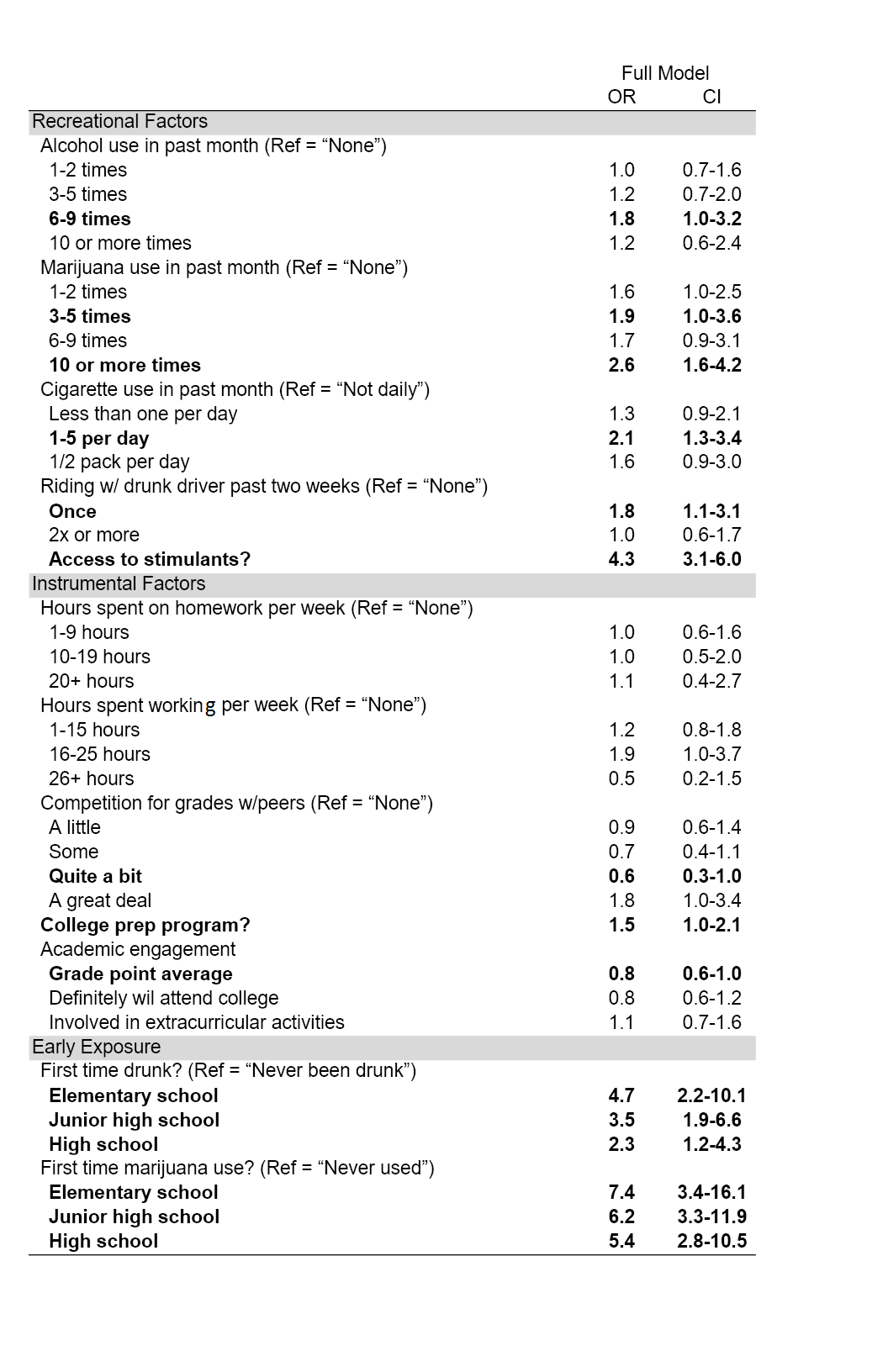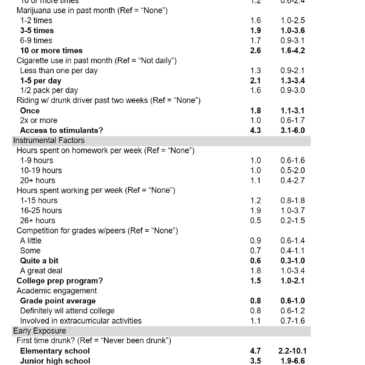Non-prescribed stimulant use (NPSU) among adolescents is estimated to be 16.7% by age 18. Although, among college students NPSU is often used as a study aid for academic achievement, much less is known about the reasons younger adolescents engage in NPSU. This week’s STASH kicks off our Special Series on Youth Risky Behavior with a review of a study from Kenneth Leon and Dr. Daniel Martinez published in the Journal of Psychoactive Drugs, which examined risk factors associated with NPSU among middle and high school students.
What was the research question?
What factors predict NPSU among middle and high school students?
What did the researchers do?
The researchers conducted secondary data analysis using Monitoring The Future’s 2011 data for 8th and 10th graders (13-14 year olds and 15-16 year olds). The sample included 10,639 8th and 10th graders with a 91% and 86% aggregate response rate respectively. The researchers assessed recreational factors (e.g., partying) by measuring age of first use and past month use for alcohol, marijuana, and cigarettes. They assessed instrumental factors (e.g., using stimulants to boost academic performance) by measuring hours spent doing school work, competition for grades, college prep, GPA, extracurriculars, and, hours each week working. The authors used logistic regression to assess if recreational and instrumental factors predicted any past 12-month NPSU.
What did they find?
Leon and Martinez found that most of the instrumental factors were not predictive of past year NPSU. As Table 1 shows, two instrumental factors, GPA and experiencing “quite a bit” of competition for grades, were significant protective factors; however, being part of a college prep program increased NPSU risk. A number of recreational risk factors increased risk for NPSU, including past-month alcohol and marijuana use and access to stimulants as well as early exposure to using alcohol and marijuana.

Figure. Adjusted odds ratios (OR) and confidence intervals (CI) for past 12 month non-prescribed stimulant use (NPSU) among 8th and 10th graders, adapted from Leon & Martinez (2017). Note. Bold rows indicate statistically significant risk or protective factors. The model controls for demographic factors including gender, race/ethnicity, region, family composition, and mother’s education. Click image to enlarge.
Why do these findings matter?
The results indicate that NPSU among this sample of middle and high school students is driven more by recreational influences and less by academic influences. This is in contrast to reports among samples of college students. It’s possible that kids with high academic standards–who might be most motivated to use stimulants to boost their academic performance–have parents with a more authoritative parenting style, and these parents limit their kids’ access to non-prescription stimulants during these early years. It’s also plausible that academic demands still are manageable in middle and early high school but intensify later in high school and in college, leading to a shift in NPSU risk factors as young adults mature.
Every study has limitations. What are the limitations in this study?
The cross-sectional data used in this study makes it impossible to identify temporal relationships between non-prescription stimulant use and the risk and protective factors discussed in this study. This study relied on previously collected data, preventing the authors from including questions about reasons for using non-prescribed stimulants.
For more information:
If you are concerned about yours or a loved one’s substance use, visit our resource page for brief screens to assess substance use and self-help tools.
— John H. Kleschinsky
What do you think? Please use the comment link below to provide feedback on this article.




